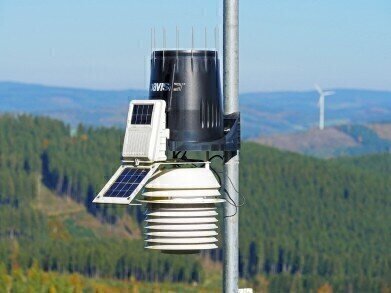Air Monitoring
What Instruments Are Used to Measure Air Quality?
May 16 2022
The quality of the air around us is of paramount importance for a number of reasons. Not only does it have a direct bearing on our health in both the short and long terms, but it can also impact upon the survival of the flora and fauna with which we share the planet. Meanwhile, air that is highly polluted can accelerate the process of global warming and contribute towards climate change.
For that reason, governments around the world have introduced their own Air Quality Indexes (AQIs), which are systems set up to monitor and report on ambient air quality in real time. But how, exactly, do they go about gathering this information? Here’s an introduction to some of the instruments and techniques used to measure air quality, but for a more in-depth investigation of the topic, interested parties are invited to attend the Air Quality and Emissions (AQE) Show which is set to take place in Telford in the UK later this year.
Satellites
It might sound counterintuitive, but one of the most effective methods of addressing global air pollution challenges on Earth is from outer space. By leveraging space science and using satellites in orbit around our planet, we can build up a detailed picture of the contaminants present in our atmosphere. In particular, these instruments can measure amounts of particulate pollution, as well as ground-level ozone, carbon monoxide and other major contaminants.
Two examples of satellite monitoring systems include the Geostationary Operational Environmental Satellites-R (GOES-R) and the Joint Polar Satellite System (JPSS), both of which are operated by the National Oceanic and Atmospheric Administration (NOAA) in the USA. The former is capable of measuring pollution concentrations at five-minute intervals, while the latter provides a much higher-resolution snapshot of air quality once a day.
On-the-ground sensors
As well as satellite data, the AQI is also informed by a vast network of sensors at ground level. Traditionally, these have taken the form of stationary monitoring facilities, often located at government buildings. However, greater awareness about the danger of poor air quality has led to an overhaul of UK’s air quality monitoring networks (and those of other nations around the world) to introduce mandatory sensing equipment at all major industrial sites.
Additionally, this static information is supplemented even further by an ever-increasing network of mobile sensing technology. From vehicles fitted with air quality monitoring instruments to handheld instruments which are carried around by volunteering members of the public, this fluid source of air quality measurements is crucial to maintaining an up-to-the-minute record of how pollutants fluctuate in concentration and travel over time. Of course, different contaminants require different pieces of equipment, with carbon detectors, ozone detectors and sulphur dioxide detectors among the most common.
Digital Edition
IET 34.2 March 2024
April 2024
Gas Detection - Biogas batch fermentation system for laboratory use with automatic gas analysis in real time Water/Wastewater - Upcycling sensors for sustainable nature management - Prist...
View all digital editions
Events
Apr 30 2024 Melbourne, Australia
Apr 30 2024 Birmingham, UK
May 03 2024 Seoul, South Korea
May 05 2024 Seville, Spain
May 06 2024 Minneapolis, MN, USA


















